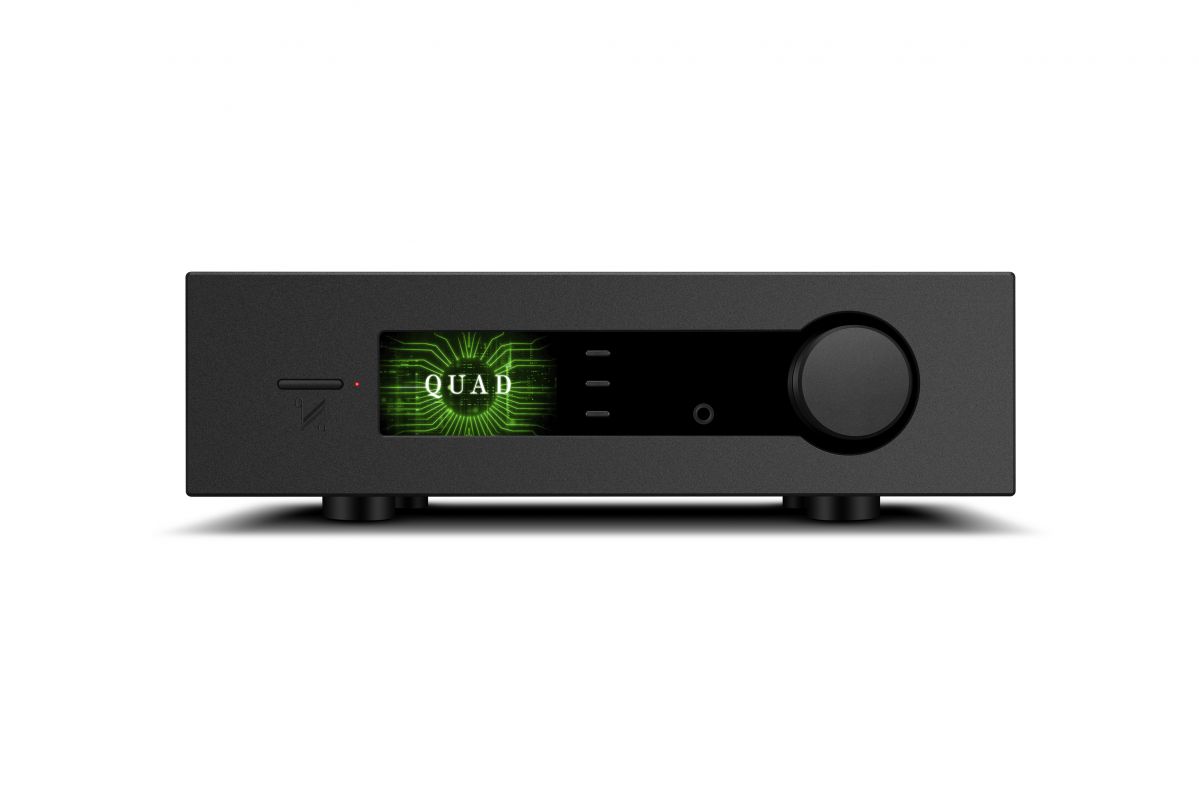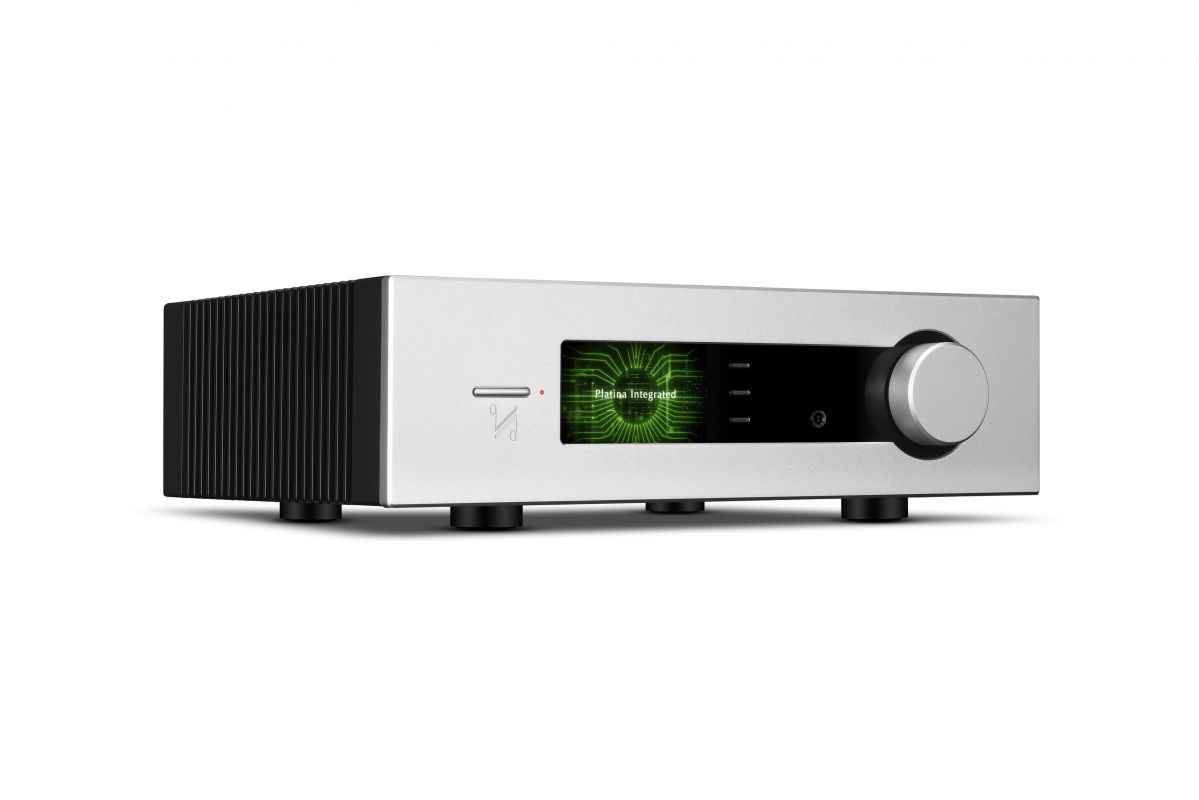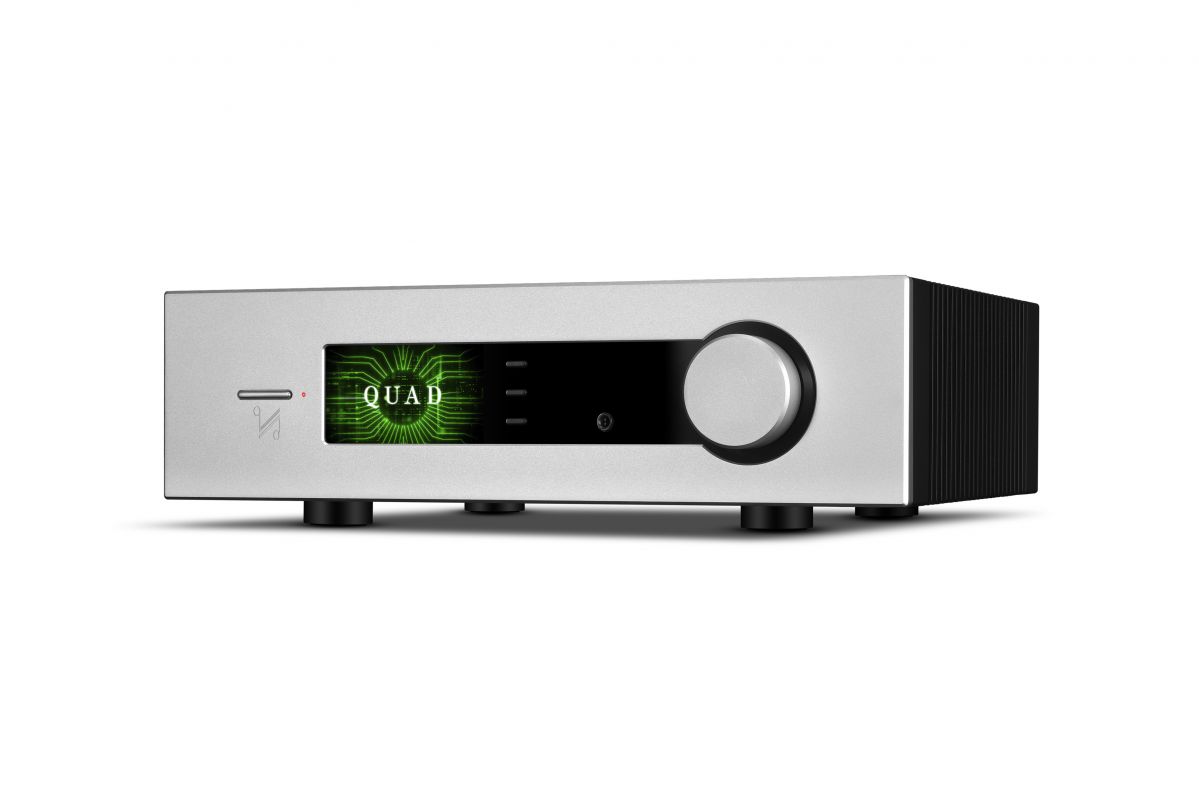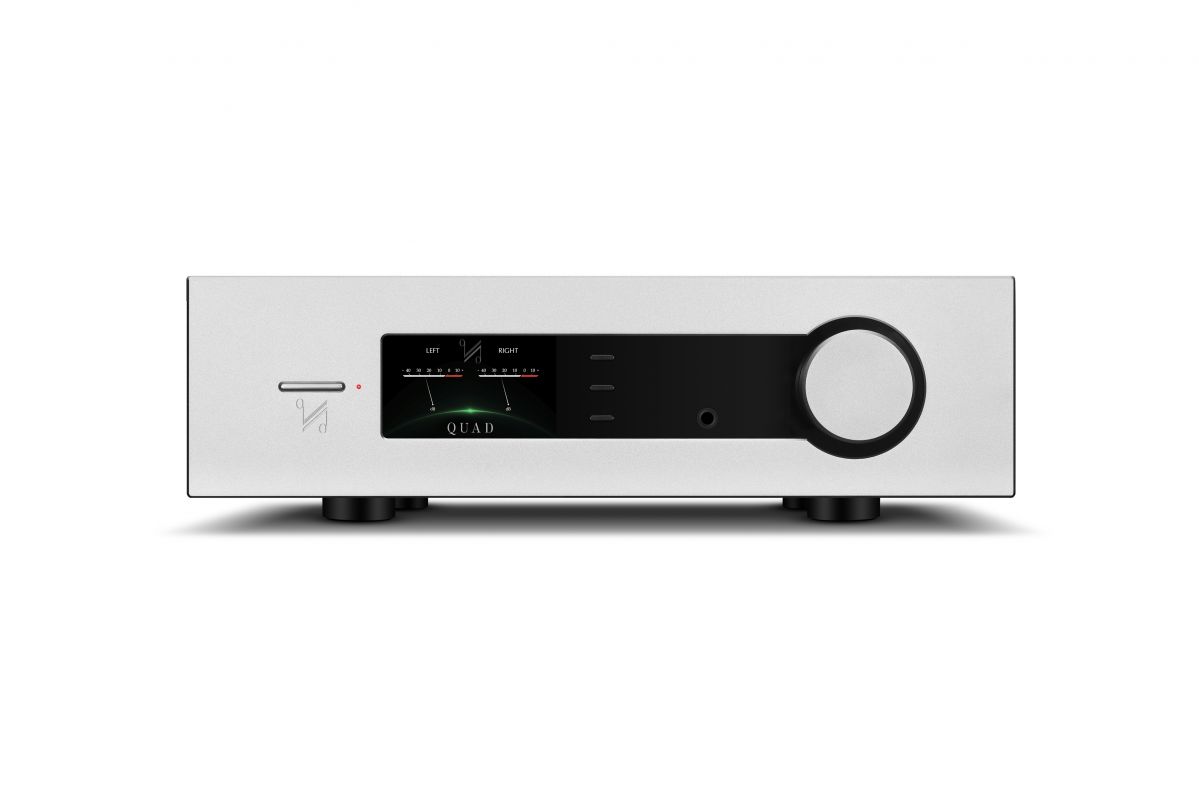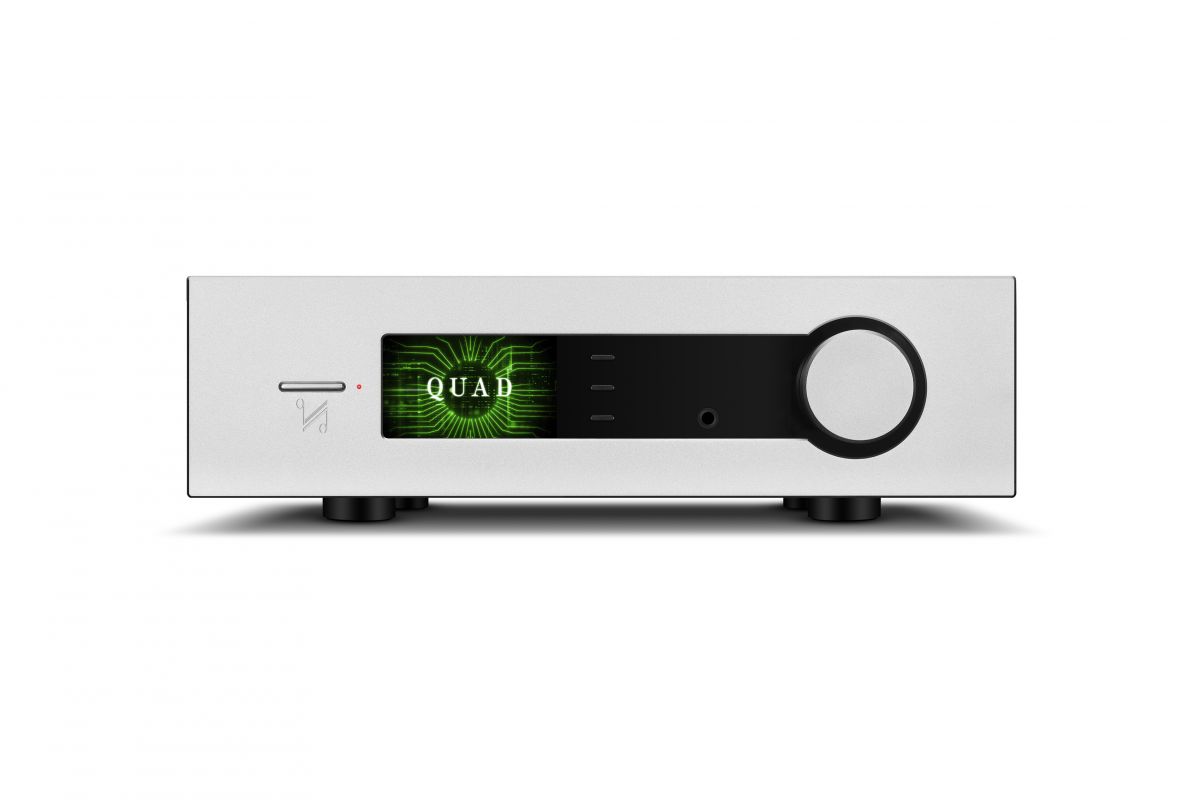QUAD has launched its most accomplished range of audio electronics yet: the Platina Series, hi-fi’s new gold standard, with the Platina Integrated at its heart.
Since QUAD’s first transistor-based stereo amplifier – the 33/303 pre/power amp, introduced in 1967 – the company has revised and updated its solid-state audio electronics across successive generations, continuing to innovate whilst carefully maintaining ‘QUAD DNA’. All of which has led to this: the Platina Integrated, QUAD’s finest integrated amplifier yet.
The culmination of a five-year R&D project, the Platina Series is QUAD’s new flagship range of audio electronics. Visitors to international audio shows since 2023 may have had the opportunity to experience prototypes of the Platina Integrated, but the amp was still in development (alongside other Platina components) and QUAD did not want to put it into production until the design was perfected.
Now, the Platina Integrated is ready to launch, alongside a matching network player called Platina Stream. A third component – a CD transport – will join the range in 2026.
The Platina Integrated forms the beating heart of the Platina Series – as such, its performance is critical to the range. QUAD’s team of electronics engineers re-examined every circuit element that makes a QUAD amp distinctly ‘QUAD’, from input to output and took everything back to a clean sheet. They then designed a fitting new flagship for the QUAD brand circuit by circuit and, through a process of testing and listening, refined the design until the Platina Integrated was production ready.
With a wide range of digital and analogue inputs – the former including HDMI and USB and the latter featuring a new MM/MC phono stage design – the Platina Integrated is a hi-fi powerhouse ideal for driving the world’s finest loudspeakers, including QUAD’s recently launched ESL X electrostatic models.
Its dual-mono Class AB design delivers 200W per channel into 8 ohms and 300W into 4 ohms, with a maximum output current of 20A.
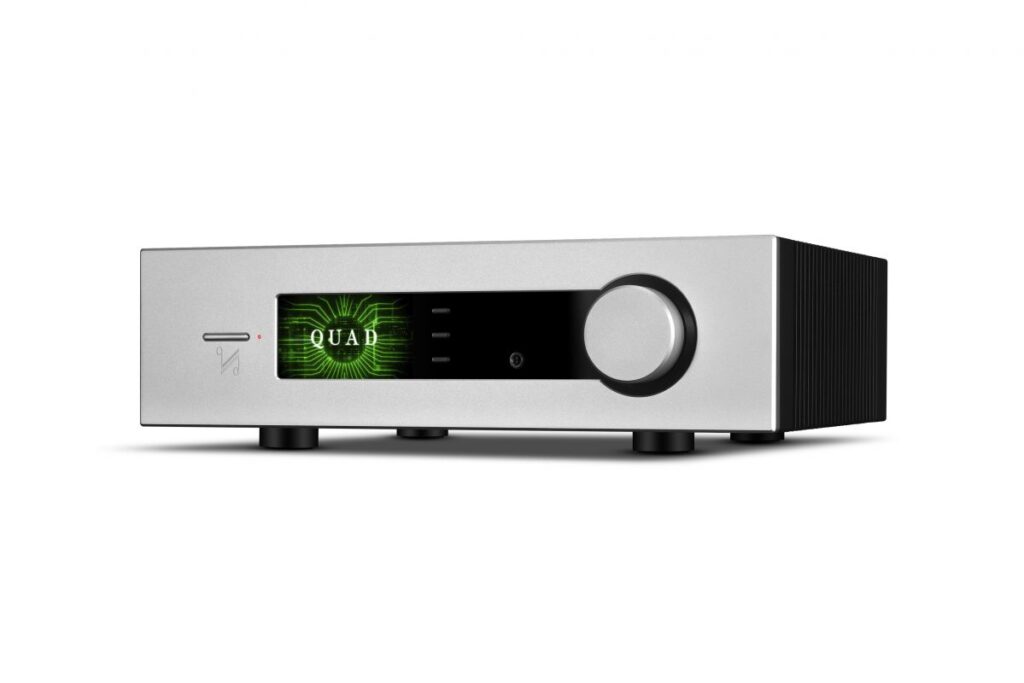
Over its five-year development period, numerous circuit component combinations were trialled by ear to ensure they worked in concert to deliver the desired musical result. Where suitable components were not available off the shelf, they were custom-designed – for example, bespoke capacitors were developed in collaboration with renowned specialist Wurth Elektronik, exclusively for the Platina amp.
A massive, ultra-low-noise 630VA toroidal transformer, also specially designed for the Platina Integrated, combines with a large filter capacity in the power supply (44,000uF per channel) and cascaded voltage regulators in the analogue and digital sections to uphold QUAD’s reputation for musical integrity.
The amp’s architecture leverages extensive surface-mount component integration to achieve a compact, low impedance, noise immune design with excellent thermal stability. These short, meticulously designed connection lines deliver lower parasitic inductance and resistance, which in turn translates to lower impedance in signal and power paths, reduced susceptibility to noise and oscillations and improved high-frequency performance.
Optimised component placement also minimises circuit loops – important for current paths – while reducing electromagnetic interference and improving thermal and electrical symmetry, which is key for both sonic fidelity and long-term reliability.
A microprocessor-controlled, high-linearity, active analogue volume control delivers precise, smoothly stepped adjustment. Its design uses four separate channels to enable balanced analogue signals to remain in their balanced state all the way from the XLR input and the onboard DAC’s differential output, through the preamp and volume stages, to the XLR preamp output – another element that contributes to the Platina Integrated’s performance in the banishment of noise and distortion.
Designed to sit at the centre of a high-performance, multi-source audio system, the Platina Integrated offers an array of inputs. On the digital side, a USB-C port caters for hi-res audio to the highest specification, alongside four S/PDIF inputs (two coaxial and two optical).
QUAD has also included an HDMI ARC port for seamless AV system integration. This allows the amp to connect to a TV using a single HDMI cable, with the added convenience of being able to use the TV remote to power the amp on/off with the TV, adjust volume and so on.
Thus, the TV and everything connected to it – from streaming devices to games consoles – receive a sonic upgrade that the brands claims is superior to any soundbar. This is a facility that is increasingly in demand from purchasers of stereo amps, fuelled by the fact that many people are using their TV systems to stream music as well as video content.
Four stereo inputs are provided for analogue sources: one balanced XLR and three RCA (two line-level and one for a turntable). In addition to high-quality gold-plated binding posts for connecting speakers, output options include RCA and balanced XLR pre-outs – to feed an external power amp or active speakers, or to add a subwoofer – and a 6.35mm headphone socket.
The Platina Integrated’s digital stage is built around the ES9038PRO – a preeminent DAC chip from the top tier of ESS Technology’s current Sabre range. The chip’s eight audio channels are fully utilised to deliver a balanced differential stereo signal, eradicating noise and distortion alongside proprietary QUAD circuitry.
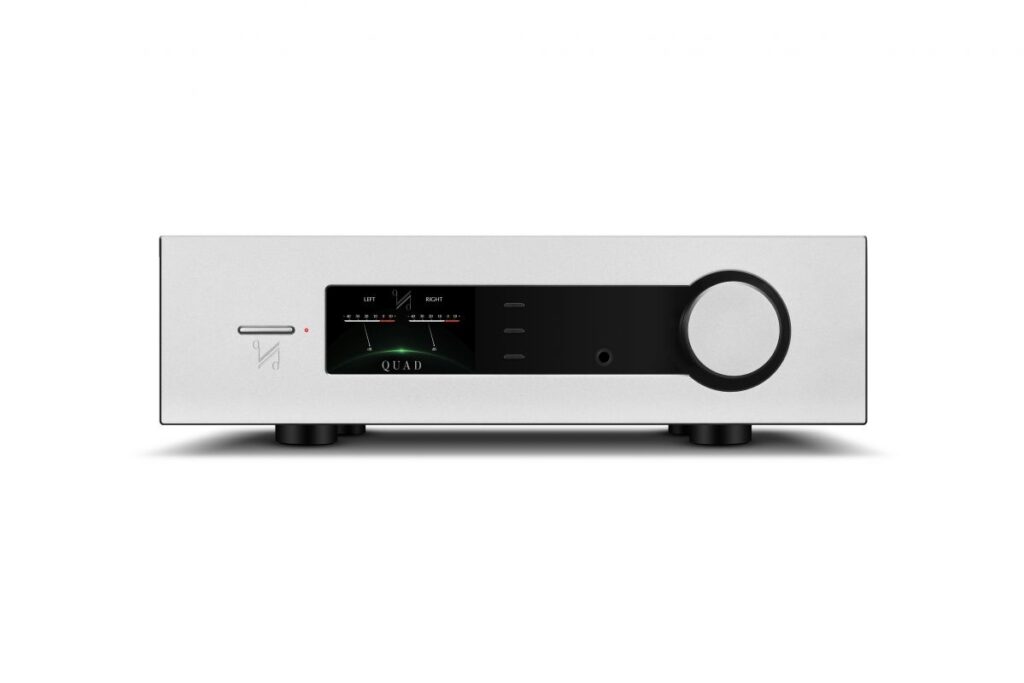
Sabre DAC chips must be implemented with care to extract their full sonic potential. The post-DAC active filter is a critical element – QUAD has incorporated a Class A circuit that is perfectly tailored to make the most of the ES9038PRO’s signal-to-noise performance and dynamic range.
Two ultra-precision master clocks work with the DAC chip to banish jitter (data timing errors that cause audible distortion). One of these is dedicated to the Red Book CD-standard 44.1kHz sample rate and multiples thereof, while the other locks down sample rates based on the 48kHz standard – hi-res PCM sample rates are commonly multiples of 48 (96kHz, 192kHz, 384kHz and so on).
The Platina Integrated’s hi-res audio support is state-of-the-art, handling PCM to 32-bit/768kHz and DSD to 22.5MHz (DSD512). Lower quality audio streams are upsampled to 352.8kHz/384kHz, or users can instead apply one of five DAC reconstruction filters to tune the sound from digital sources – especially useful given the variable quality of audio formats and streaming services.
The S/PDIF inputs’ DPLL (Digital Phase Lock Loop) can be adjusted to accommodate varying levels of jitter in the incoming signal, and the amp is certified Roon Tested to work seamlessly in a Roon-controlled environment.
Whether connected via USB, HDMI or S/PDIF, every digital source is said to benefit from the quality of the Platina Integrated’s DAC stage, from computers and CD players to TVs and streaming devices.
QUAD has developed a new phono stage to ensure all the detail dug from the grooves of a vinyl record is delivered with engaging clarity and verve. A JFET-based design, it amplifies the signal from both moving magnet (MM) and moving coil (MC) phono cartridges to line level and applies precise RIAA equalisation.
Users can select from three gain settings – 46dB, 52dB and 60dB – to match the output characteristics of their chosen cartridge. The phono stage’s ultra-low-noise performance sets it far apart from the phono stages typically included in integrated amps, especially when used with low-output MC cartridges which require great care when boosting the signal to a usable level.
Headphone lovers are well served by dedicated headphone amp circuitry which, like the phono stage, delivers a sound superior to that typically offered by the headphone outputs of integrated amps. Its ultra-low-noise current-feedback design ensures greater clarity, wider bandwidth and superior transient response.
The amp’s chassis is fashioned from steel with a thick anodised aluminium front panel and vibration-damping feet, constructed to protect the electronics within from all manner of interference. The fascia design is strikingly minimalist, especially when the 4.3in IPS LCD screen is switched off – the display, headphone output and three buttons are positioned discreetly within a central black band that extends right to surround a machined aluminium rotary control. This encoder is both the volume control and a multifunctional tool to navigate the amp’s graphically rich user interface.
The menu system gives access to various user-selectable settings such as the upsampling and filter modes for digital sources, and gain and input impedance for vinyl. Other adjustable options include sensitivity for the analogue inputs, left/right balance control, fixed or variable output in ‘pre mode’, elapsed time before entering standby and maximum volume on power up.
The display itself is full colour, sporting 800×480 pixels across its 4.3in screen, with a stellar shade of ‘sci-fi green’ used as the Platina Series’ signature colour. When the user is not accessing the amp’s settings, there is a choice of five on-screen options: the default display showing selected input, volume level, audio format and so on; VU-style meters in ‘analogue’ or ‘digital’ form showing real-time signal levels before or after the volume control; the Platina Series logo; or the classic QUAD logo. The display can be simplified by removing animations and dimmed or turned off completely.
The QUAD Platina Integrated amplifier is available from November. It comes with a choice of silver or black front panel, at an RRP of £3,499.
A second Series Platina component, the Platina Stream network player, begins shipping at the same time as the Platina Integrated. A matching CD transport will follow in early spring 2026.


